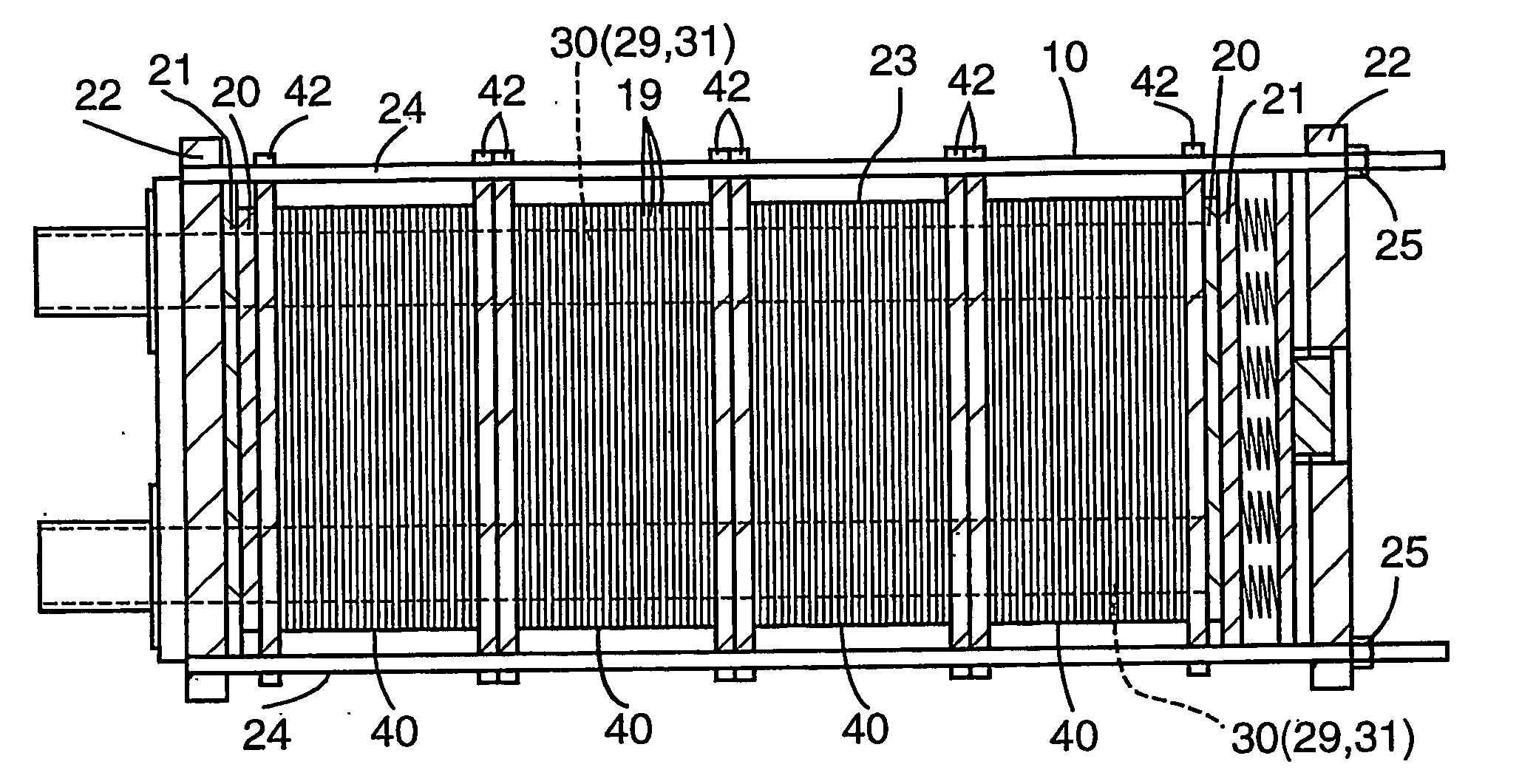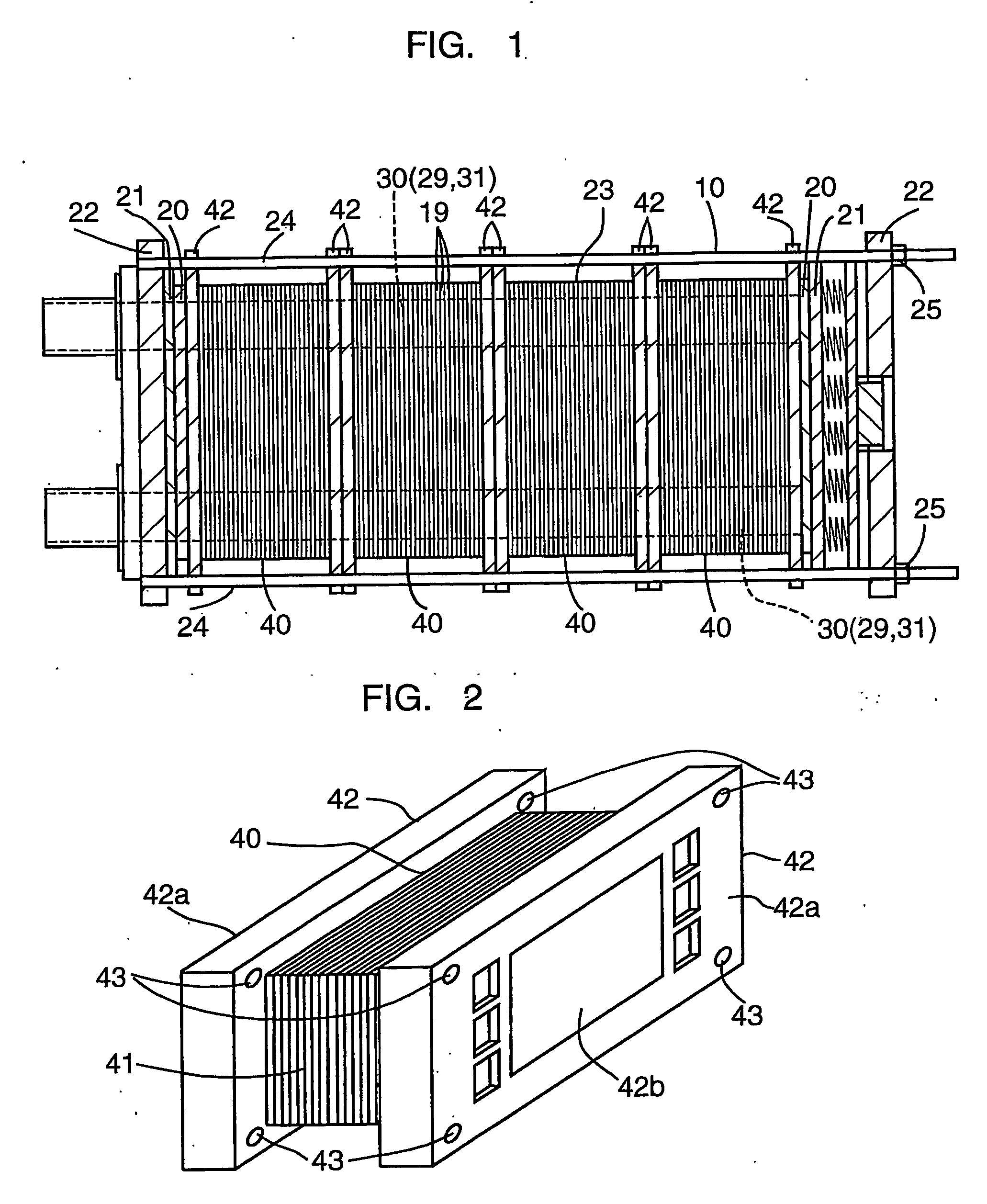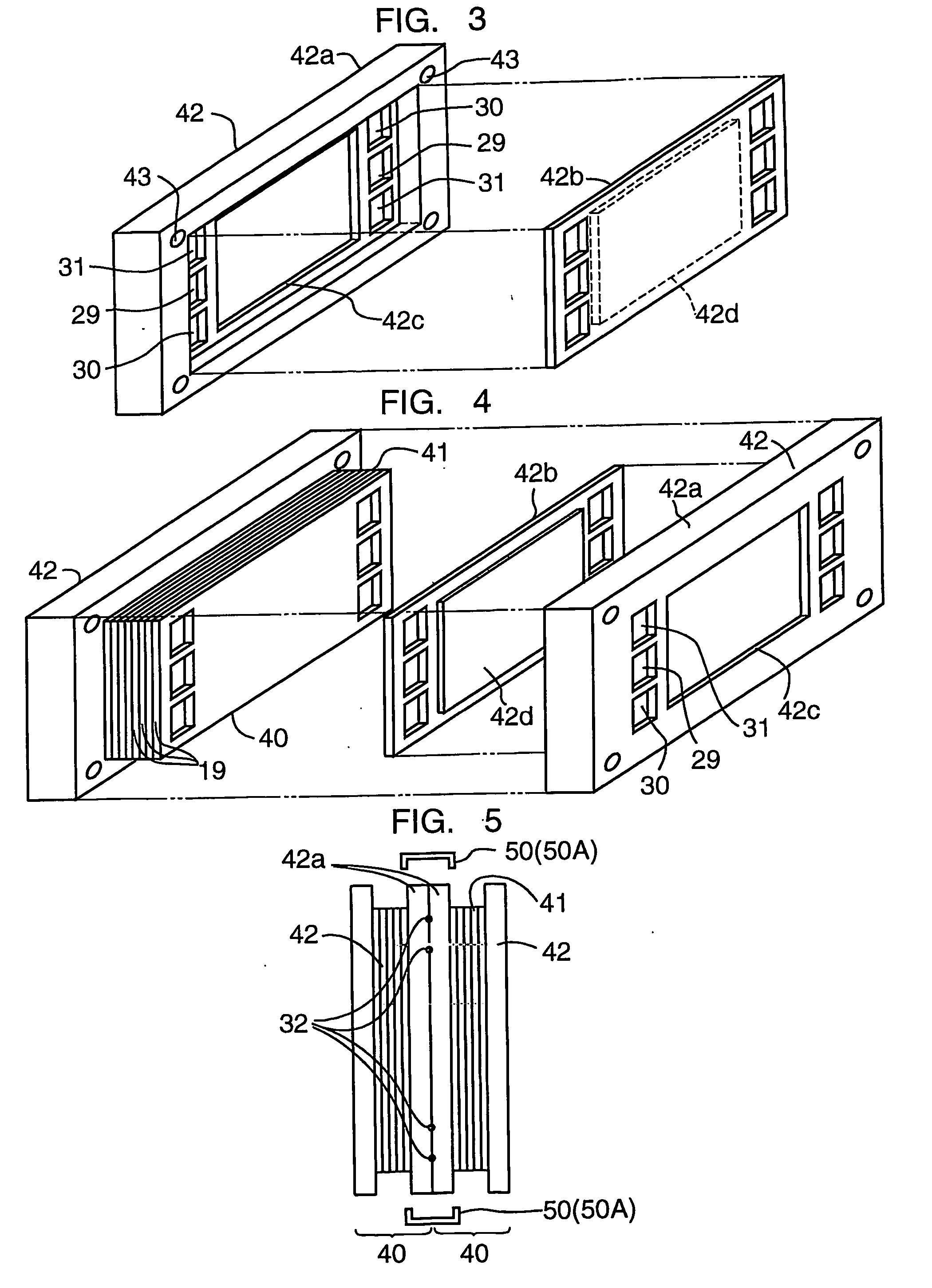Fuel cell stack
a fuel cell and stack technology, applied in the field of fuel cells, can solve the problems of fuel cell interference with the external restraining member, difficult to ensure the necessary contact pressure between the fuel cells,
- Summary
- Abstract
- Description
- Claims
- Application Information
AI Technical Summary
Benefits of technology
Problems solved by technology
Method used
Image
Examples
embodiment 1
[0110] In embodiment 1 of the present invention, as illustrated in FIGS. 1-4, the extended portion 42a of the end fuel cell 42 is made from synthetic resin and the separator portion 42b of the end fuel cell 42 is made from metal, for example, stainless steel. The holes 43 are provided at the four corners of the rectangular extended portion 42a.
[0111] The individual fuel cells of the multi-cell assembly 41 of the multi-cell module 40 is adhered to each other by the adhesive seal 33. The seal between the adjacent multi-cell modules 40 (between a multi-cell module and its multi-cell module) is a rubber gasket 32.
[0112] The fastening shaft 24 which is commonly used as the restraining shaft 24 extends through the hole 43 formed in the extended portion 42a and restrains the multi-cell module 40 in the direction perpendicular to the fuel cell stacking direction. Since the extended portion 42a of the end fuel cell 42 is made from synthetic resin, the extended portion 42a is electrically i...
embodiment 2
[0116] In embodiment 2 of the present invention, as illustrated in FIGS. 5-7, the end fuel cells 42 of adjacent multi-cell modules 40 are connected by a connecting member 50 that is different from the fastening shaft 24. In Embodiment 2 of the present invention, the connecting member 50 is a clip 50A. The clip 50A may have or may not have elasticity.
[0117] With respect to effects and technical advantages of embodiment 2 of the present invention, the rubber gasket 32 seals between the adjacent multi-cell modules 40 and adhesive seal 33 seals between the fuel cells in each multi-cell module. When the spring force of the spring located at an end of the stack acts on the multi-cell modules 40, and if the opposing end fuel cells 42 of the adjacent multi-cell modules 40 do not have a sufficient rigidity, the opposing end fuel cells 42 will be deformed in a direction away from each other. As a result, a necessary seal force is not imposed on the rubber gasket 32.
[0118] However, in embodi...
embodiment 3
[0119] In embodiment 3 of the present invention, as illustrated in FIGS. 8 and 9, the end fuel cells 42 of adjacent multi-cell modules 40 are connected by the connecting member 50 which is different from the fastening shaft 24. In embodiment 3 of the present invention, the connecting member 50 is a bolt 50B or a rivet.
[0120] The effects and technical advantages of embodiment 3 of the present invention are discussed below. In the case where the seal between the fuel cells of each multi-cell module 40 is an adhesive seal and the seal between the adjacent multi-cell modules 40 is a rubber gasket 32, if the end fuel cells 42 of the adjacent multi-cell modules do not have a sufficient rigidity, a sufficient seal force cannot be given to the rubber gasket 32.
[0121] However, in embodiment 3 of the present invention, since the opposing end fuel cells 42 of the adjacent multi-cell modules 40 are pressed against each other by the bolt SOB or a rivet at the extended portions 42a, a sufficien...
PUM
 Login to View More
Login to View More Abstract
Description
Claims
Application Information
 Login to View More
Login to View More - R&D
- Intellectual Property
- Life Sciences
- Materials
- Tech Scout
- Unparalleled Data Quality
- Higher Quality Content
- 60% Fewer Hallucinations
Browse by: Latest US Patents, China's latest patents, Technical Efficacy Thesaurus, Application Domain, Technology Topic, Popular Technical Reports.
© 2025 PatSnap. All rights reserved.Legal|Privacy policy|Modern Slavery Act Transparency Statement|Sitemap|About US| Contact US: help@patsnap.com



